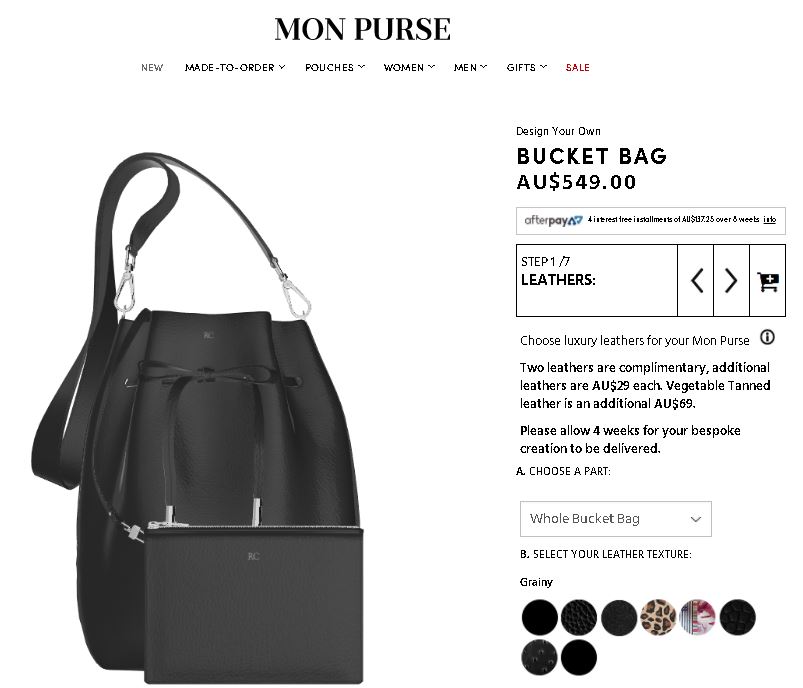Personalisation in action at Adidas’ ‘knit for you’ concept store in Berlin.
It has been said that the definition of insanity is doing the same thing over and over again and expecting different results. While in the abstract this does seem nuts, as a retailer working hard to keep your business going you can easily fall into the trap of doing what you’ve always done—and expecting sales to grow, or at least remain the same.
However, it pays to take a step back and look at the bigger picture. What do consumers today want from a retail experience? What new and innovative technology is out there? What are the retail trends your business could benefit from?
With this in mind, we’re taking a look at that final question. Here are three key retail trends you’ll be hearing a lot about this year.
Personalisation
One of the buzzwords surrounding retail at the moment is personalisation. Not just when it comes to products (think bespoke Mon Purse bags or Adidas’ ‘knit for you’ pop-up store) but personalising the entire retail experience.

Mon Purse allows customers to design their own bag.
Collecting and analysing customer data is one way to personalise how you do business, according to Gary Mortimer, retail expert and associate professor at the Queensland University of Technology business school.
“[Retailers are] using data driven approaches to deeply understand, if not predict, customer behaviour. This enables retailers to send offers to customers that are more relevant.”
Executive director of the Australian Retailers Association (ARA), Russell Zimmerman, agrees.
“Retailers who have a strong understanding of who their customers are will thrive this year,” he said. “Having a comprehensive view of each consumer will enable retailers to cater specifically for their customers in a personalised way.
“This year retailers should have a better understanding of how their consumers shop, whether that’s online (across multiple channels), in-store, and, on many occasions, a combination of both. Therefore any promotional activity should incorporate a holistic strategy to ensure consumers receive a personalised offering, maximising their shopping experience and strengthening their relationship with the retailer.”
Right-sizing
Right-sizing is a phenomenon we are seeing across the globe. From department stores in the US like Sears and Macy’s to Australian retailers like Myer and Mountain Designs—retailers are reducing their fleet of stores.
Mortimer said this is about closing loss-making sites and focussing on only the most profitable. Whether you are the head of a retail chain or only operate a few stores, this idea is worth thinking through. Do you really need that third location?
Specialisation
According to National Retail Association CEO Dominique Lamb, specialisation is an important and growing trend. Bricks-and-mortar retailers in particular should pay attention as offering a niche product or service can help drive customers into stores.
“The future of retail outlets will be all about specialised products and services, with a particular focus on creating a diversified in-store experience to entice customers to visit the outlet,” she said.
“In the long-run, future trends will be away from traditional shopping centres, as they are restrictive in terms of what you can sell, and the rents are becoming too high for businesses to remain sustainable (except maybe for certain types of retail such as chains and franchises where scale allows many costs to be absorbed or allocated.).”
Specialisation is also a way for retailers to both grow their business and cut costs while reducing the size—rather than the number—of their stores. Mortimer pointed to supermarkets and department stores as examples of this trend.
“Supermarkets like Sainsbury’s, Coles and Woolworths are trialling smaller format stores. David Jones has opened two small format businesses and UK department store Debenhams launched a smaller model in Melbourne late last year.
“Smaller formats allow for a more ‘curated’ range of products, tailored to the local market, reducing the need for discounting, reducing rents, and giving access to high density areas where space is at a premium.”
While you might assume fewer products in-store (and thus less choice) would be a drawback for customers, Mortimer said the opposite is true. “[It] reduces shoppers’ ‘tyranny of choice’—making it easier for shoppers to choose.”
Get the latest on the art and science of retailing delivered straight to your inbox. Sign up to the weekly retailbiz newsletter.

